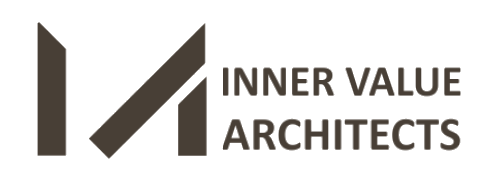In today’s world, we’re all looking for ways to be...
In a world that often seems cluttered and chaotic, the concept of minimalism offers a refreshing alternative. Minimalist interior design is not just about creating sleek and stylish spaces; it’s a philosophy that celebrates simplicity, functionality, and the beauty of less. By stripping away excess and focusing on what truly matters, minimalist design can transform your home into a sanctuary of tranquility and harmony. Minimalist interiors provide a stark visual contrast to the busy, cluttered and overstimulating spaces we often find ourselves in. By stripping away the unnecessary objects, colors and embellishments, minimalism allows you to create a calming oasis within the walls of your home.
In this blog, we’ll explore eight ways to embrace minimalism in interior design, from decluttering and simplifying your space to incorporating natural materials and keeping decor meaningful. Whether you’re a seasoned minimalist or just beginning to explore this aesthetic, these principles will help you create spaces that are not only visually stunning but also promote a sense of well-being and intentionality. Join us on this journey as we discover how to declutter, streamline, and create spaces that embody the essence of minimalism. Let’s dive into the art of less and explore how it can revolutionize the way you design and inhabit your home.
Key Strategies for Minimalist Interior Design
Minimalist interior design is about creating a clean, uncluttered, and functional space that promotes tranquility and simplicity. Here are some key strategies for achieving a minimalist interior design:

1. Declutter Simplify
The foundation of minimalist design lies in decluttering your space. Begin by going through each room with a critical eye, letting go of anything that does not bring you joy or serve an essential purpose. Donate, sell or discard excessive decorative objects, redundant pieces of furniture, and any accumulated clutter weighing down your living areas. This decisive editing process to design luxury homes by eliminating the non-essentials is crucial to achieving a clean, open and breathable minimalist aesthetic. By removing the superfluous items overwhelming your spaces, you’ll be able to create an uncluttered, streamlined atmosphere that feels calming and inviting.
2. Embrace Clean Lines Simple Shapes
Clean lines, simple shapes, and sleek silhouettes define minimalist design, which favors an unfussy and simple approach. When selecting furniture and decor, choose pieces with angular frames, geometric silhouettes, and a lack of ornate details or embellishments. Avoid overly carved woodwork, busy upholstery patterns, or designs with excessive embellishments that can disrupt the calm, uncluttered aesthetic you’re aiming for. Instead, prioritize furniture and objects with crisp lines, uncomplicated shapes, and sleek hardware or finishes. These streamlined profiles allow each piece to make a strong yet understated statement within the space.
3. Choose a Neutral Color Palette
A neutral color palette is crucial for achieving a simple aesthetic. Opt for shades like crisp white, warm beige, soothing grays, or soft earthy tones inspired by nature. These subtle colors create a sense of calm and serenity that defines minimalist spaces. Use them predominantly throughout your rooms to provide a serene backdrop, allowing your carefully selected furniture pieces and accents to stand out. A neutral palette promotes a cohesive and harmonious atmosphere, ensuring other elements can shine without competing for attention. Avoiding bold, saturated colors helps maintain the open, airy feel characteristic of minimalist design.
4. Incorporate Natural Materials
Embracing natural materials is common in design styles that favor warmth and texture. Elements such as rich wood tones, organic stone surfaces, and metallic accents bring depth and character to a space. These natural elements can be introduced through choices like hardwood flooring, slate tiles, wooden furniture with visible grain patterns, or raw metal accent pieces and light fixtures. The diverse textures they offer create a sense of organic simplicity and visual intrigue that complements the clean lines and spaciousness often sought in modern interiors. Incorporating natural materials grounds the space with an earthy, tactile quality, ensuring it feels inviting and avoids any sense of sterility.
5. Natural Light
Natural light plays a crucial role in home design, creating a bright and expansive atmosphere that promotes openness and tranquility. To enhance your eco-friendly and energy-efficient home, maximize natural illumination by avoiding heavy window coverings that block sunlight. Opt for sheer, lightweight curtains that filter in a warm glow throughout the day. Additionally, strategically place mirrors opposite windows or in compact areas to reflect light deeper into the space, creating a more spacious and luminous feel. Embracing natural light sources helps cultivate an environment that feels refreshingly bright and intimate.
6. Embrace Open Floor Plans
Open floor plans are often associated with modern design principles, as they create a sense of expansiveness and seamless flow between living areas. These layouts eliminate compartmentalized, boxed-in spaces in favor of integrated and visually connected rooms. If your home’s architecture allows, consider removing non-structural walls or barriers to achieve an open and uncluttered layout that enhances sightlines. For homes with traditionally defined rooms, aim to create implied openings and visual connections through strategic openings, walkways, or design elements that naturally guide the eye from one area to the next.
7. Incorporate Functional Storage Solutions
In a space focused on simplicity, every item should serve a deliberate purpose and have a carefully designated place. To maintain an uncluttered and organized aesthetic, invest in functional storage solutions that keep belongings neatly tucked away. Built-in shelving units or closet systems optimize space by providing enclosed storage areas. Furniture that doubles as storage, such as ottomans with removable tops or console tables with drawers, are also perfect for such interiors. These integrated storage options ensure everything has its place, preventing items from cluttering open surfaces and disrupting the clean and curated environment.
8. Focus on Intentional Decor
Less is often more when it comes to decorative accessories in a simple yet elegant space. Rather than cluttering surfaces with an abundance of knick-knacks, focus your attention on just a few purposefully selected decor pieces that hold personal significance or artistic value. These intentional elements can add visual interest and layers of meaning without detracting from the overall minimalist aesthetic. Perhaps it’s a striking sculptural vase, a textural woven wall hanging, or a sentimental item that sparks joy. Whatever the piece may be, it should be chosen with care and displayed prominently to let it shine. Minimalism isn’t about forsaking decor altogether, but rather editing it down to your most prized, thought-provoking objects.
Embrace Minimalist Design with Inner Value Architects
Embracing minimalism in interior design offers not only a visually appealing aesthetic but also a pathway to a more serene and harmonious living space. By incorporating decluttering techniques, you can create a home that promotes calmness and well-being. Remember, the journey towards minimalism is not just about aesthetics; it’s also about embracing a lifestyle that prioritizes what truly matters. As you embark on your minimalist design journey, consider consulting with an Inner Value Architect for the best results. By working with experts, you can gain valuable insights and guidance to create a space that not only looks beautiful but also feels deeply meaningful and fulfilling. So, whether you’re downsizing your living space or simply seeking a more tranquil environment, consider enlisting the expertise of an Inner Value Architect to help you achieve your minimalist design goals.










